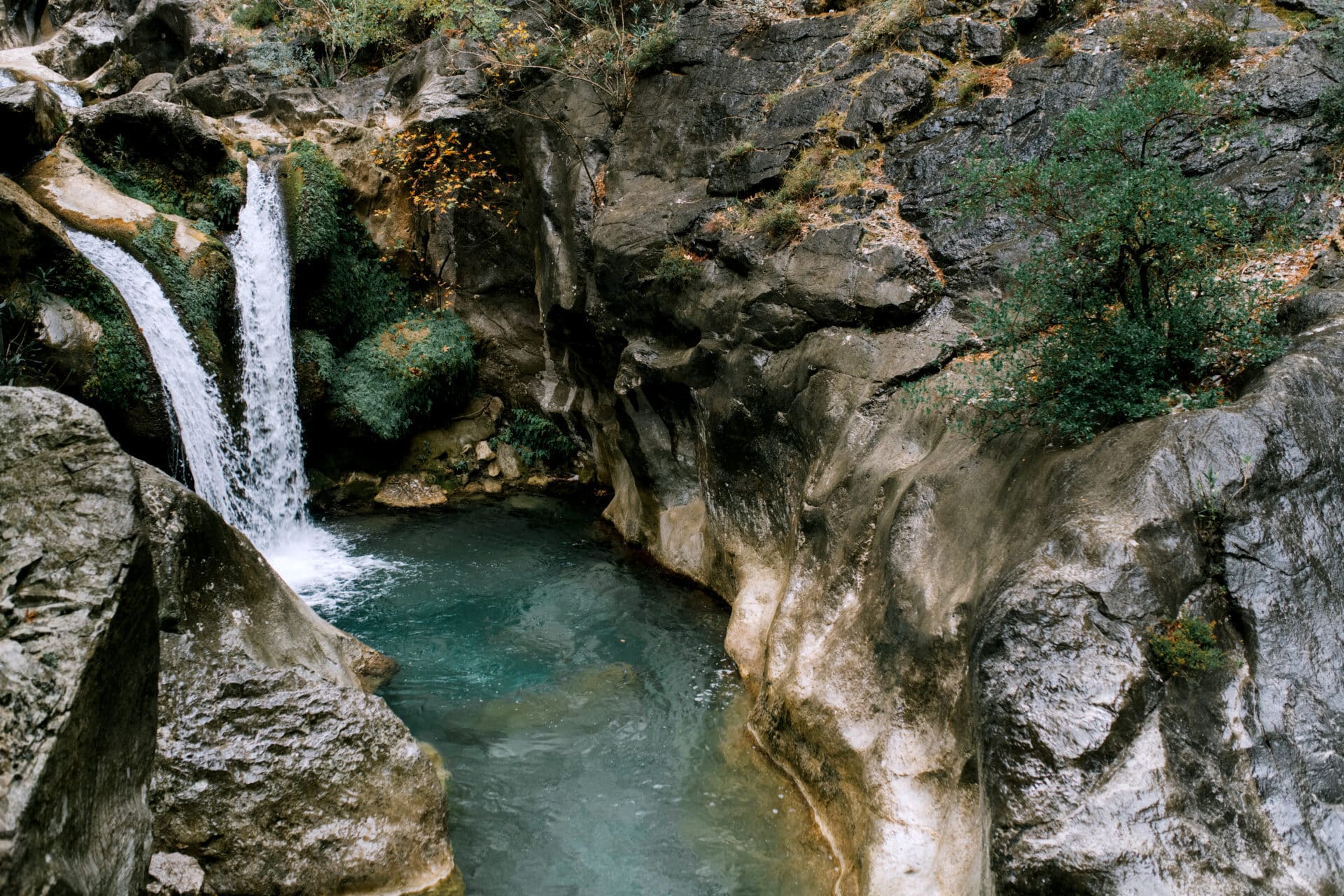Distilled water and RO water are two types of purified water, each created with a different process. Distilled water is boiled and evaporated, leaving behind impurities that can damage your health. RO water, on the other hand, is filtered through a membrane and is free from minerals, salts, and other contaminants. Both types of water provide safe drinking water for your family. However, they differ in taste and the minerals they contain. The main difference between distilled water and RO water lies in their purification process.Distilled water is water that has been boiled and condensed to remove any impurities or contaminants. It is commonly used for drinking, medical purposes, and laboratory experiments, as it does not contain minerals or other impurities.
Reverse Osmosis (RO) Water
Reverse osmosis (RO) is a water purification process that uses a partially permeable membrane to remove ions, molecules, and larger particles from drinking water. In reverse osmosis, an applied pressure is used to overcome osmotic pressure, a colligative property that is driven by chemical potential differences of the solvent, a thermodynamic parameter. Reverse osmosis can remove many types of dissolved and suspended species from water, including bacteria, and is used in both industrial processes and the production of potable water. The result is that the solute is retained on the pressurized side of the membrane and the pure solvent is allowed to pass to the other side. To be “selective”, this membrane should not allow large molecules or ions through the pores (holes), but should allow smaller components of the solution (such as solvent molecules) to pass freely.
Reverse osmosis differs from filtration in that the mechanism of fluid flow is by osmosis across a membrane. The predominant removal mechanism in membrane filtration is straining, or size exclusion, where the pores
The Process of Distillation
Distillation is a process used to separate a mixture or solution into its component parts, or to purify a substance. It involves the boiling of the solution and the condensation of the vapor. In distillation, the vaporized component of the mixture is collected and condensed back into liquid form. The liquid that is collected is called the distillate, and it can be used for a variety of purposes such as producing drinking water or for industrial applications. The process of distillation can be used to separate mixtures that contain different components with different boiling points. This makes it a useful tool in the chemical industry as it can be used to isolate specific compounds from a mixture.
The Process of Reverse Osmosis
Reverse osmosis is another method used to separate components from a mixture or solution. It works by forcing water through a semi-permeable membrane that allows certain molecules to pass through while blocking others. This process creates two streams: one containing purified water and one containing concentrated solids such as salts, minerals, and other contaminants that are not able to pass through the membrane
Difference in Taste between Distilled and RO Water
The taste of water is an important factor to consider when choosing between distilled and reverse osmosis (RO) water. Distilled water is prepared by boiling and then condensing the steam. The process removes impurities, minerals, and other solids from the water, making it virtually pure. On the other hand, RO water is filtered through a semipermeable membrane that allows only certain particles to pass through. In addition to removing impurities, this process also removes many beneficial minerals from the water.
The difference in taste between distilled and RO water can be quite noticeable. Distilled water has a clean taste but can often be described as bland or flat due to the lack of minerals. On the other hand, RO water has a slightly mineral-like taste due to the remaining trace elements that weren’t removed during filtration. Some people prefer distilled water because it tastes cleaner, while others prefer RO water for its more complex flavor profile.
When it comes to health benefits, both types of waters are beneficial in different ways. Distilled water lacks electrolytes, so it may not be ideal for those who
Difference in Mineral Content between Distilled and RO Water
The mineral content of distilled and RO water is quite different, with each having its own distinct advantages. Distilled water is created through the process of distillation, where the water is boiled and then condensed back into liquid form. This removes any impurities, minerals, and other contaminants that may be present. On the other hand, RO water is created through a reverse osmosis filtering process that removes almost all solid matter from the water. The result is a very pure form of water with very few minerals present.
Distilled water contains no dissolved minerals, making it an excellent choice for drinking as it does not contain any unhealthy metals or chemicals. Some people may also choose this type of water for cooking and other uses as it can help reduce scaling in kettles and other appliances due to its lack of minerals. However, it should not be used for long-term consumption as the body needs minerals to remain healthy.
RO water on the other hand contains some dissolved minerals due to its filtration process which leaves behind trace amounts of calcium and magnesium ions

Applications of Distilled Water
Distilled water has numerous applications ranging from industrial to household uses. It is used in the production of several consumer products, such as steam irons, batteries, and car radiators. It is also used in many commercial and industrial processes due to its high level of purity. Distilled water is also commonly used in medical settings for cleaning wounds and for laboratory experiments. In addition, it can be used as drinking water for those who are sensitive to impurities in tap or bottled water.
Uses of RO Water
Reverse osmosis (RO) water is a type of purified water that has been filtered through a membrane using pressure. It is commonly used in households for drinking and cooking purposes. RO water can also be used for aquariums and other aquatic systems due to its lack of impurities and chemicals that can be harmful to fish and other aquatic life. In addition, it can be used as a form of irrigation as it has fewer mineral salts than regular tap water which can help to avoid damage caused by salt build-up on plants. Finally, RO water
Cost Comparison of Distilled and RO Water
The cost of distilled and reverse osmosis (RO) water varies greatly depending on the source. Distilled water is often more affordable than RO water, but the cost can vary significantly depending on the type and quality of the source. For example, distilled water from a grocery store may be cheaper than RO water from a home appliance store. Additionally, some bottled water companies offer both distilled and RO water at different price points.
When comparing the cost of distilled and RO water for home use, it is important to factor in installation costs as well as ongoing maintenance costs. Installing a reverse osmosis system in your home can be a costly endeavor, while distillation systems tend to be less expensive. However, a distillation system requires regular maintenance to keep it running efficiently. On the other hand, an RO system may require less frequent maintenance but can be more expensive to install.
In terms of ongoing costs, it is important to consider how much each type of water costs per gallon or liter. Generally speaking, distilled water tends to be slightly cheaper than RO water on a per-gallon basis. It is also important to
Health Benefits of Distilled and RO Water
Distilled water and reverse osmosis (RO) water offer several health benefits. These forms of purified water have been used to treat a variety of medical conditions for centuries. They are also becoming increasingly popular for everyday use, due to their ability to remove harmful contaminants from drinking water. Here are some of the major health benefits associated with distilled and RO water:
1. Improved Hydration: Both distilled and RO water have been shown to be better for hydration than tap or bottled water. This is because they are free from contaminants like chlorine, fluoride, and other chemicals that can interfere with the absorption of nutrients in your body.
2. Improved Digestion: Drinking purified water can help improve digestion by removing toxins from the digestive tract. This can help reduce symptoms such as bloating, constipation, and gas.
3. Enhanced Immune System: Purified water may help boost your immune system by removing impurities that can weaken it. The removal of contaminants can also lead to increased energy levels.
4. Reduced Risk of

Conclusion
The differences between distilled water and RO water are fairly clear. Distilled water is free of minerals, while RO water has a higher mineral content due to the filtration process. Both types of water can be used for drinking and other applications, but RO water is generally preferred for drinking purposes due to its mineral content. Distilled water has a longer shelf life, while RO water should be consumed more quickly because of its lower mineral content. In conclusion, it is important to understand the differences between these two types of water in order to make the best decision for your needs.
Ultimately, both distilled and RO water are safe to consume and can be used in many different ways. Depending on your needs, one type may be preferable over the other so it’s important to do your research and decide which type of water is best for you.

